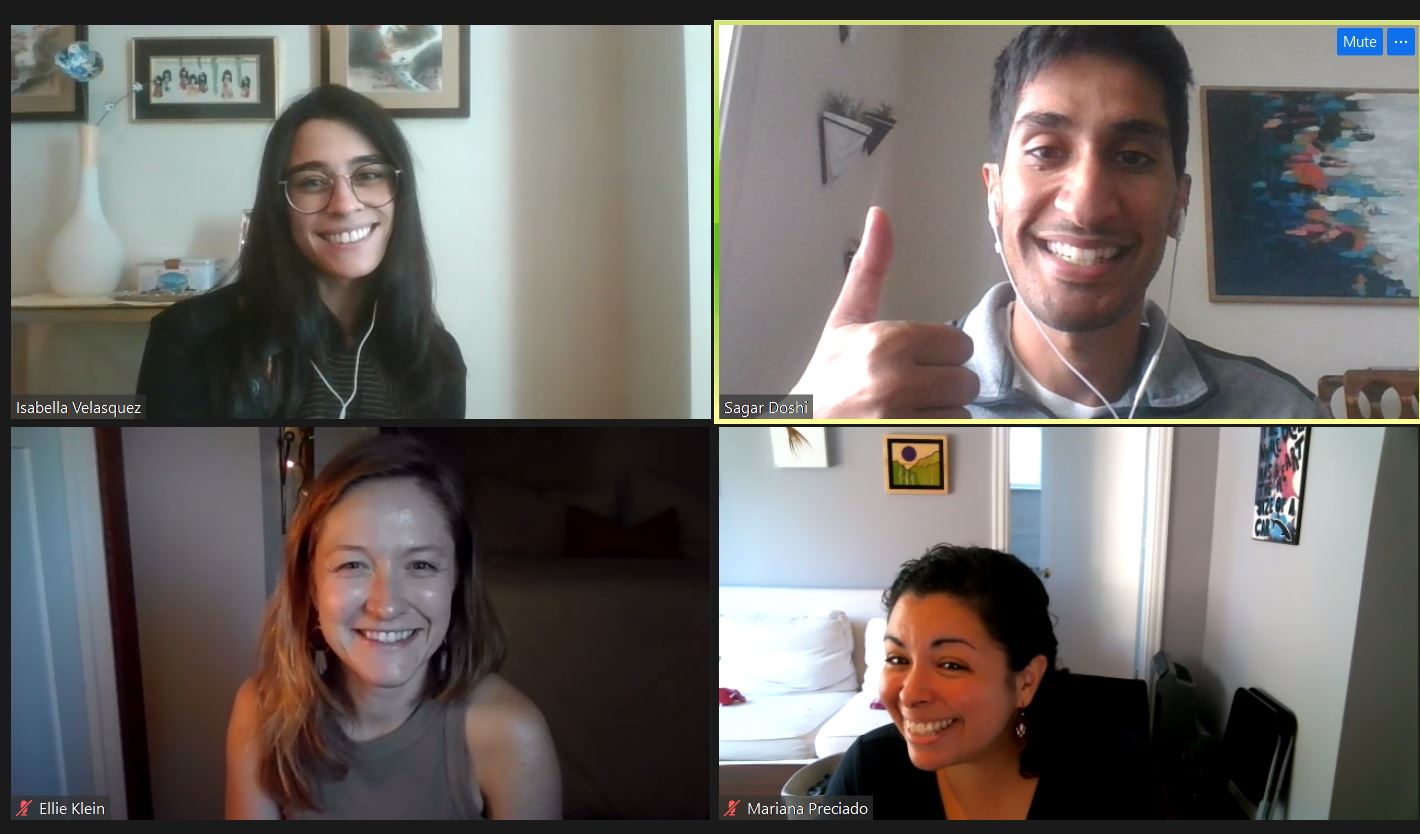Strategic & Sustainable Business Solutions: Putting Theory into Practice
This spring, Robert Strand opened his course, “Strategic & Sustainable Business Solutions” (SSBS), with a reading from an oldie-but-goodie, The Wealth of Nations by Adam Smith. Published in 1776, The Wealth of Nations laid the groundwork for modern American capitalism. Within the context of SSBS, it lays the groundwork for a semester-long study of corporate social responsibility (CSR) and sustainability.
The course is designed to: (1) give students a general overview for the concepts of CSR and sustainability and the associated debates and (2) let students apply these concepts in practice through live consulting projects. Along the way, we learn frameworks and tools that sustainability consultants and CSR professionals utilize to challenge and improve business strategy. The course is taught through a lively combination of guest lectures, readings, musings from Robert, and the practical experience of completing a consulting project with a small team of fellow students.
For me, one of the unexpected highlights of the course has been the diversity of students who take it. We have almost as many folks pursuing Masters of Development Practice as MBAs, along with a Masters in Chemical Engineering, a visiting scholar from a Japanese bank, and several others. It has been fascinating to engage with this group of students on CSR issues such as materiality, shared value, and stakeholder relations, a visiting scholar from a Japanese bank, and several others.
Another pleasant surprise has been the chance to read, really read, and think critically again. Since taking up my MBA studies, I have read loads of short articles and cases, but it was not until SSBS that I found myself reading a piece like The Economist’s “Survey of Corporate Social Responsibility” (2005) and thinking about it for hours afterward. That feeling of intellectual excitement reminds me very much of my undergraduate days as a history major, long before I knew what CSR even stood for.
“The Social Responsibility of Business Is To Increase Its Profits”
In his 1970 op-ed for the New York Times, Milton Friedman argues that it is not the businessperson’s place to use company resources to effect any form of CSR. To do so is “pure and unadulterated socialism,” equivalent to spending money that rightly belongs to the company’s shareholders, customers, and employees without their consent. I was familiar with Friedman’s argument in general terms, but to read his actual words was a thought-provoking treat. Friedman questions the morality and correctness of CSR actions, which I had certainly taken for granted prior to reading his piece.
Today, it is difficult to imagine what corporate America would be like if Freidman had his way. Most large companies now have a senior executive, or even an entire department, dedicated to CSR. These companies are obliged to publish CSR reports, care about CSR rankings, participate in related industry groups, and more. This sounds like a tremendous burden for companies, and I think it is for some. Companies that give a bunch of money away to randomly chosen charities or otherwise forgo the strategic aspect of CSR probably are wasting their time and resources. However, companies that think about CSR and sustainability strategically, in value-additive terms, are poised to derive competition advantage from these activities.
The Link Between Competitive Advantage and CSR
As a class, we read Michael Porter and Mark Kramer’s watershed piece for the Harvard Business Review, “Strategy and Society: The Link Between Competitive Advantage and CSR” (2006). A week later, who should turn up in lecture but Kramer himself, co-founder and Managing Director of FSG. Kramer taught us the concept of shared value, which champions a certain brand of “win-win” CSR.
During his talk, Kramer drew us a 2×2 matrix –he’s a consultant after all – with social impact on the vertical axis and business impact on the horizontal axis. He then pointed to the top-right corner of the matrix, where high social impact and high business impact intersect, as the place where shared value lives. Most CSR efforts, he said, unfortunately fall in the bottom-left corner of the matrix – low impact and bad for business. The best of “traditional CSR” (corporate giving, volunteerism, and so on) falls in the top-left corner; at least it is high impact, if not positive for the business. Shared value, by contrast, is where both companies and society sincerely benefit from corporate actions, a “win-win” situation in which the companies are “doing well by doing good.”
Kramer gave us numerous examples of companies that have adopted, and profited from, the shared value principle. For instance, a gold mining operation in Ghana, which produces piles of crushed rock as a byproduct of the mining process, realized it could profitably sell this “waste” for rural construction projects, thus improving the quality of life in those areas. Shared value is a means for companies to have their impact and their profits too, prompting some critics to insist that shared value is not CSR at all; it is just good business. Personally, I don’t care how it is defined if it gives companies that would not otherwise have engaged in sustainable business practices sufficient incentive to do so.
Putting Theory Into Practice
The absolute best part of the course has been the chance to put theoretical knowledge into practice for a real-life client grappling with CSR and sustainability issues. I am one of four students working with a large financial institution that seeks to improve its impact measurement and reporting practices. It has been great learning – and great fun – to see how our classroom conversations translate into value-add for this client.
To give just one example, in his talk, Mark Kramer cautioned us students against attempting to convert a social or environmental impact to some dollar figure. The method of conversion, even if it is well-reasoned, is inevitably subjective. Worse, when companies start to focus on a dollar amount, they sideline the actual impact that was achieved. So what’s the point? This insight drove my consulting team to recommend that our client commit to measuring actual impact outputs and outcomes, such as jobs created, versus attempting to calculate dollar values for these achievements. In some ways, this will be the tougher road for our client to follow. Particularly for a financial institution, it is tempting to try to report on social impact just as one would report on financial performance – in dollars and cents. However, we think that in taking this road, our client will emerge as a leader among its peers for sincere and transparent impact measurement.
Closing Thoughts
Strategic & Sustainable Business Solutions has nuanced my perspective on social responsibility and sustainability in the corporate context and spurred me to consider new ways to bring these principles into my professional life. Any student who fundamentally believes that the role of business is changing to include social and environmental stewardship will find this course provides the theory, tools, and hands-on experience to be a part of that change.



